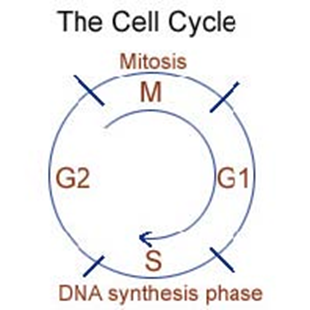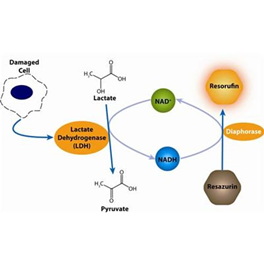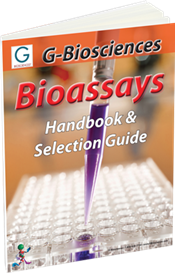Regulating the Cell Cycle
The cell cycle pertains to the series of events leading to cell proliferation. While most of the mechanisms involved in the process are highly conserved and can be observed in all eukaryotes, the cell cycle regulation mechanisms in multicellular organisms are considerably more complex than those of the lower eukaryotes.
Understanding the Cell Cycle
Generally, the eukaryotic cell cycle is divided into two main phases: the interphase and the mitotic phase.
Interphase refers to the period where the cell grows and makes all the necessary preparations before division while the mitotic phase (M-phase) pertains to the actual process where the parent cell splits to form two identical daughter cells.
The interphase has three distinct stages:
- G1 phase (first gap). In this stage, the cell is noticeably growing and is busy building its reserves of the essential components needed in the production of chromosomal DNA. This is also the stage where DNA assessment and repair take place.
- S phase. This stage is responsible for DNA synthesis and replication. Sister chromatids are formed and the centrosome is duplicated during this period.
- G2 phase (second gap). Like in the G1 phase, the cell grows in size and the DNA is repaired, if needed. The organelles are duplicated, energy stores are replenished, and the necessary resources for the mitotic phase are prepared before the cell enters the first phase of mitosis.
The mitotic phase (M-phase) is a complex process where a parent cell ultimately produces two genetically identical daughter cells. The mitotic phase is further divided into four morphologically distinct sub-phases: prophase, metaphase, anaphase, and telophase.
Cell Cycle Regulation
The rate at which a cell divides and proliferates is highly variable and may differ from one organism to another and between different types of cells in a single organism. For example, embryonic cells may divide every few hours while epithelial cells undergo a complete cycle in two to five days.
However, all requirements should be met for the cell cycle to proceed. The cells should have doubled in size, the duplication and distribution of chromosomes are virtually error-free, and the chromosomes are properly aligned and attached to the spindle fibers.
There are three internal checkpoints regulating the internal control mechanisms. The G1-S checkpoint (at the end of the G1 phase) evaluates the integrity of the DNA, the G2-M checkpoint (at the end of the G2 phase) assesses chromosome distribution, and the M checkpoint (during metaphase) checks if the kinetochore is correctly attached to the spindle fiber.
Cell Cycle Regulators
Specific proteins (cyclins), cyclin-dependent kinases (Cdks) enzymes, and enzyme complexes (APC/C) are responsible for turning the cell cycle on or off, depending on the existing internal and external conditions.
Cyclins are a group of closely related proteins regulating the events of a particular phase or period in the cycle. These proteins are usually named after the specific stage or phase when they are most active. Thus, they are commonly referred to as G1-cyclin, G1/S-cyclin, S-cyclin, and M-cyclin. Alternately, they are also labeled as cyclins A, B. D, or E.
Cyclin levels fluctuate throughout the cycle. The levels increase significantly when they are most needed and decline before advancing to the next stage.
Cyclin-dependent kinases (Cdks) are a family of enzymes that phosphorylate specific target proteins. The activity of these enzymes is triggered upon phosphorylation and the attachment of a partner cyclin subunit.
Several Cdks have significant functions in the cell cycle.
- CDK1 forms complexes with mitotic cyclins and sends cells into mitosis. However, the destruction of cyclin B inactivates it.
- CDK2 regulates the G1 and S phases and is closely associated with cyclins A and E.
- CDK4 and CDK6 form complexes with D-type cyclins which then trigger the transcription of genes for the S phase.
- CDK7 plays a crucial role in initiating transcription.
- CDK8 and CDK19 play a crucial role in transcriptional regulation.
- The function of CDK3 is not fully understood while CDK5 doesn’t seem to have any roles at all in cell cycle control.
G-biosciences offers a selection of Cyclins and Cyclin-dependent kinase (Cdk) antibodies and ELISA kits.
The Cell Cycle: (Source: National Cancer Institute, SEER training module)

Cell Death and Cell Proliferation Assay
https://www.gbiosciences.com/Cell-Toxicity-Proliferation-Assays/CytoScan-fluoro-Cytotoxicity-Assay

Handbook:




